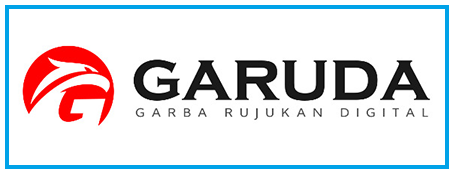EFEKTIVITAS MANAJEMEN HAUS PADA NY. M DENGAN CKD ON HD: CASE REPORT
Keywords:
Chronic Kidney Disease, Hemodialisis, Manajemen Haus, Pembatasan CairanAbstract
Chronic Kidney Disease (CKD) patients has a decline in kidney function and require hemodialysis therapy to remove excess fluid, metabolic waste, and electrolytes. Fluid restrictions are necessary for hemodialysis patients to control Interdialytic Weight Gain (IDWG), which can exacerbate feelings of thirst. This study aims to evaluate the effectiveness of thirst management for CKD patients on HD. The study used a case report method with a descriptive design, focusing on Mrs. M, who was selected based on inclusion criteria: receiving hemodialysis therapy at least once a week at Sumedang District Hospital and agreeing to participate in thirst management interventions. Evaluation was performed using the Visual Analogy Scale (VAS) and IDWG. The results of implementing the intervention in stages over 5 weeks indicated that the method of chewing sugar-free xylitol gum effectively reduced the thirst scale from 6 to 3 and decreased IDWG from the severe to the mild category. Thirst management using the chewing sugar-free xylitol gum method, with a maximum consumption of 30-40 pieces per day, can be effective in reducing the thirst scale and managing IDWG in CKD patients on HD by increasing saliva secretion from the parotid gland.
Downloads
References
S. R. Vaidya and N. R. Aeddula, “Chronic Kidney Disease,” pp. 1–16, 2024.
S. Rahane and R. Patel, “Effect Of Comprehensive Nursing Strategies On Thirst Distress Management Among The Patients With Chronic Kidney Disease (CKD),” NeuroQuantology, vol. 20, no. 14, pp. 103–108, 2022, doi: 10.4704/nq.2022.20.14.NQ88014.
H. N. Murdeshwar and F. Anjum, Hemodialisis. 2024.
IRR, “11th report Of Indonesian renal registry 2018,” Indones. Ren. Regist., pp. 14–15, 2018.
D. PPNI, “Srandar Diagnosa Keperawatan Indonesia,” Artikel, vol. 5, no. April, pp. 20–26, 2022.
A. Lestari, R. Apriyanti, and C. K. Negara, “Low-salt dietary intake reduces hunger in patients with chronic renal failure.,” J. EduHealth, vol. 13, no. 01, pp. 195–203, 2022.
S. Lestari, I. Kuswadi, and H. Prasanto, “Determinants of thirst distress in patients on hemodialysis,” Int. Urol. Nephrol., vol. 48, no. 9, pp. 1525–1532, 2021, doi: 10.1007/s11255-016-1327-7.
M. P. Ramadhan, K. Yetti, T. Herawati, M. Adam, and A. Masfi, “Gambaran Komplikasi Intradialisis Pada Pasien Hemodialisis Berdasarkan Tingkat Interdialytic Weight Gain (Idwg),” Nurs. Updat., vol. 14, no. 1, 2023, [Online]. Available: https://stikes-nhm.e-journal.id/NU/article/view/1043.
U. Najikhah and W. Warsono, “Penurunan Rasa Haus Pada Pasien Chronic Kidney Disease (CKD) Dengan Berkumur Air Matang,” Ners Muda, vol. 1, no. 2, p. 108, 2020, doi: 10.26714/nm.v1i2.5655.
D. E. Leib, C. A. Zimmerman, and Z. A. Knight, “Thirst,” Curr. Biol., vol. 26, no. 24, pp. R1260–R1265, 2016, doi: 10.1016/j.cub.2016.11.019.
P. Zuliani, B. M. Nur, and R. Azzam, “Pengaruh Pemberian Permen Karet Xylitol terhadap Kesehatan Mulut (Xerostomia) pada Pasien Chronic Kidney Disease (CKD),” J. Keperawatan Silampari, vol. 3, pp. 302–311, 2019, doi: https://doi.org/10.31539/jks.v3i1.820.
NKF, “Learning to Follow Your Dialysis Fluid Restrictions,” pp. 1–4, 2022.
Y. Armiyati, K. Khoiriyah, and A. Mustofa, “Optimization of Thirst Management on CKD Patients Undergoing Hemodialysis by Sipping Ice Cube,” Media Keperawatan Indones., vol. 2, no. 1, p. 38, 2019, doi: 10.26714/mki.2.1.2019.38-48.
J. L. Saranga et al., “The Effectiveness of Slimber Ice Against Thirst Intensity In Hemodialysis Patients With Chronic Kidney Disease,” Media Keperawatan Indones., vol. 6, no. 1, p. 33, 2023, doi: 10.26714/mki.6.1.2023.33-38.
N. Ozen et al., “The effect of chewing gum on dry mouth, interdialytic weight gain, and intradialytic symptoms: A prospective, randomized controlled trial,” Hemodial. Int., vol. 25, no. 1, pp. 94–103, 2021, doi: 10.1111/hdi.12878.
G. V. Octaverlita and T. Sensussiana, “PENERAPAN MENGUNYAH PERMEN KARET RENDAH GULA ( XYLITOL ) UNTUK MENGONTROL HAUS PADA PASIEN CKD YANG MENJALANI HEMODIALISA DI RUMAH SAKIT INDRIATI,” vol. 11, pp. 1–9, 2023.
L. kurnia Rezky and J. Handajani, “Efek Pengunyahan Permen Karet Gula dan Xylitol terhadap Status Saliva.” Yogyakarta, pp. 21–24, 2011, doi: https://doi.org/10.22146/majkedgiind.16450.
H. Basit, B. J. Eovaldi, and M. A. Siccardi, “Anatomy, Head and Neck, Mastication Muscles,” StatPearls, pp. 4–7, 2019, [Online]. Available: http://www.ncbi.nlm.nih.gov/pubmed/31082071.
Y. Delgado Arcaño, O. D. Valmaña García, D. Mandelli, W. A. Carvalho, and L. A. Magalhães Pontes, “Xylitol: A review on the progress and challenges of its production by chemical route,” Catal. Today, vol. 344, no. April 2018, pp. 2–14, 2020, doi: 10.1016/j.cattod.2018.07.060.
K. Gunnars, “Xylitol : Everything You Need to Know,” pp. 1–14, 2023.
D. Sun-Waterhouse, W. Kang, C. Ma, and G. I. N. Waterhouse, “Towards human well-being through proper chewing and safe swallowing: multidisciplinary empowerment of food design,” J. Futur. Foods, vol. 1, no. 1, pp. 1–24, 2021, doi: 10.1016/j.jfutfo.2021.09.001.
S. Obiefuna and C. Donohoe, “Neuroanatomi , Nukleus Gustatory,” pp. 1–5, 2024.
M. G. Ghannam and P. Singh, “Anatomy, Head and Neck, Salivary Glands.,” Treasure Island (FL), 2024.
B. Brazen and J. Dyer, “Histology , Salivary Glands Histochemistry and Cytochemistry,” pp. 6–9, 2024.
J. Axe, “Xylitol Benefits vs. Dangers for This Popular Sugar Substitute,” Dr.Axe, 2022, [Online]. Available: https://draxe.com.
Downloads
Published
How to Cite
Issue
Section
License
Copyright (c) 2024 Ayyida Aini Rahmah, Kurniawan Yudianto, Nita Fitria

This work is licensed under a Creative Commons Attribution-ShareAlike 4.0 International License.









